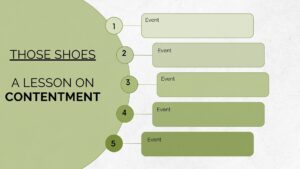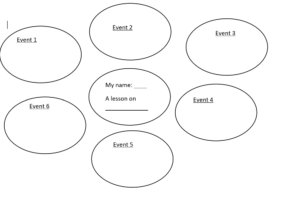Readers are writers and writers are readers.
I love a good idea map and a quality mentor text! As a former writing teacher, idea maps and mentor texts were paramount to my writing instruction.
What better way to become a thoughtful writer than to examine a mentor text as a model for whatever genre we’re learning how to write?
In today’s lesson idea, I’ll break down a writing lesson using a mentor text and idea map. While I am using a specific text, you can insert whatever text you’re teaching into the idea map.
These strategies will engage everyone from the most reluctant writer to writing savant in your class!
Personal Narrative: Sharing Lessons Learned
Mentor Text: Those Shoes by Maribeth Boelts
Timeline: 3-4 days
Objectives (in kid friendly language):
-I can decide on and map out 5-6 specific events that reveal the lesson Jeremy learned in Those Shoes.
-Given a list of common themes/lessons, I can pick a lesson I’ve learned in my life.
-I can decide on an audience who would benefit from reading about my lesson learned.
-I can map out 5-6 specific events that led me to learn that lesson.
-I can use my Idea Map to write a personal narrative.
Biblical Integration: God’s purpose for us is to love Him and love those around us. Lessons we learn are tied to one or both of those purposes. Where do we see God’s purpose for us in the lesson Jeremy learned and the lessons we’ve learned?
Gallery Walk Anticipatory Set: Post 5-6 common themes around the room. Using sticky notes, students will jot down 1-2 ideas about the theme. This could be a personal experience, books with those themes, or synonyms.
Common Themes/Lessons List (feel free to add or change themes):
- Contentment/Be Happy with what You Have
- Friendship
- Overcoming Challenges
- Hard Work Pays Off
- Honesty
- Kindness
Lesson: Introduce Those Shoes. As you read, stop, and ask students if they notice any of the themes from the gallery walk. At the end, have kids stand by the theme they think best represents the story. Then, they’ll pair up and share their reasoning with a partner.
Once everyone’s shared, have them come back to the carpet or desks to introduce the Idea Map.
No-Frills Idea Map Frilly Idea Map


- Model finding the first 3 events that reveal the story’s lesson.
- Then, have pairs of students discuss the next 3 events that reveal the story’s lesson.
- Once pairs have decided, have them pair with another group to share ideas by agreeing or coaching one another.
Say to students, “Just like our author, Maribeth Boelts, used Jeremy’s experience to reveal a lesson, we, as writers, can pick a lesson we’ve learned in our lives and write about it to teach others that same lesson. Authors are excellent teachers when it comes to learning how to write! Authors aren’t just writing for themselves; they’re writing to a specific audience they think will benefit from their message. As we think about lessons we’ve learned, we also have to think about who would benefit from hearing and learning from our lesson.”
The rest of the time will focus on the following steps:
- Deciding on a theme/lesson and a situation that reveals that lesson
- Deciding on an audience who would benefit from reading about our lesson
- Mapping out ideas using the Idea Map
- Composing the narrative using the Idea Map
- Sharing the narrative with the intended audience
Have students revisit the themes around the room, then stand by one they’ve experienced in their own life.
As with any moments of vulnerability, be sure to set expectations when it comes to sharing and listening. Students may pick an event that was difficult for them. Is the classroom a safe space for them to share with others? If not, what needs to happen in order to make it a place for sharing?
After students have selected their theme and situation where they experienced that theme, have them partner with someone else who picked the same theme. They will then discuss what sort of audience might benefit from reading about their lesson learned.
After selecting their theme and deciding on an audience, students will fill in their Idea Map like the one used for Those Shoes.


Using the idea map, students will:
- Draft their personal narrative
- Go through the peer and teacher editing process
- Write a final draft to share with their intended audience
This lesson presupposes that you’ve already taught proper paragraph writing, editing techniques, and how to use edits to write a final draft. If not, back up a few steps and teach those skills!
I’d love to hear how you taught this lesson or revised it and made it your own!
And remember, readers are writers and writers are readers.
